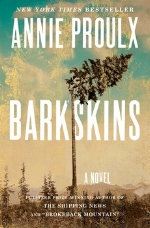Pachinko Min Jin Lee (2017)
“Pachinko” is a popular Japanese slot-machine game. You may wonder, until well past the halfway point of this novel’s 485 pages, what pachinko has to do with a saga about four generations of a Korean family in the twentieth century. Have patience.
First you have to be well steeped in the story of Sunja, a poor teenager who is seduced by Hansu, an older Korean gangster, in her village in what is now South Korea. By chance, Isak, a Korean Christian minister, passes through the village. He rescues Sunja from the ignominy of an unwed pregnancy by marrying her and taking her to Japan, where he will work as a missionary. The year is 1933.
Historical events of the turbulent twentieth century constantly buffet Sunja, Isak, and their extended family and friends in Japan, where the bulk of the story plays out. Japan’s expansionist wars of the 1930s and 1940s fuel nativist sentiments in the Japanese populace. Korean immigrants, who are “zainichi” (foreign residents), are relegated to the most menial jobs and are paid less than Japanese for the same work. Korean children born in Japan do not become citizens—they’re essentially countryless. As one character pronounces: “’This country [Japan] isn’t going to change. Koreans like me can’t leave. Where we gonna go? But the Koreans back home aren’t changing, either. In Seoul, people like me get called Japanese bastards, and in Japan, I’m just another dirty Korean no matter how much money I make or how nice I am.’“ (383)
Once Korea is partitioned into North and South in 1948, the situation gets even murkier: “After the [Korean] peninsula was divided, the Koreans in Japan ended up choosing sides, often more than once, affecting their residency status. It was still hard for a Korean to become a Japanese citizen, and there were many who considered such a thing shameful—for a Korean to try to become a citizen of its former oppressor.” (441)
A few ethnic Koreans living in Japan figure out that they can become entrepreneurs in the pachinko business, and a well-run pachinko parlor can turn a nice profit. Proceeds from pachinko parlors, plus help from that gangster Hansu, pave the bumpy road out of poverty for some characters in the novel. Other characters hide their Korean ethnicity, dressing like the Japanese, learning to speak Japanese without an accent, taking a Japanese spouse. This subterfuge is possible because the physical characteristics of Japanese people and Korean people are often very similar.
The straightforward, direct sentence style in Pachinko suits the themes of the novel, and the Korean and Japanese words in the text give the flavor of the setting without weighing down the narrative. I caught the simple ones, like “kimchi” (the Korean dish of fermented cabbage and radish) and “hanko” (a hand stamp of one’s name, used throughout East Asia). The meanings of other words were obvious from their context, but I had to look up a few as I read.
It would have been easy for novelist Lee to paint the Japanese as always the bad guys and the Koreans as always the good guys, but she does not adopt this dichotomy. Although she lays out the Japanese discrimination against Koreans clearly, her long list of characters includes both Koreans and Japanese who are deceitful and honest, talented and mediocre, wise and foolish, lazy and hardworking, compassionate and heartless, selfish and generous, prejudiced and open-minded. She pulls into her story subplots that touch on issues such as the status of minority Christians in Japan and the evolving attitude toward the place of women in the family and in the workplace over the course of the twentieth century.
Above all, though, this is a universal story about the immigrant experience—about taking a job that’s far beneath your skill level because you don’t know the language, about being segregated into a slum area, about being subject to complicated rules that you don’t understand, about living constantly with fear. Immigrants enter a game of chance, stacked against them, much like pachinko players.
In her Acknowledgements, Lee tells us that it took her nearly thirty years to write this impressive novel. It was well worth the time.







